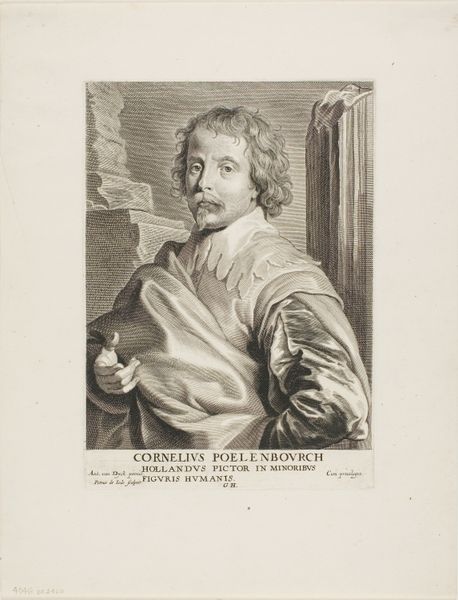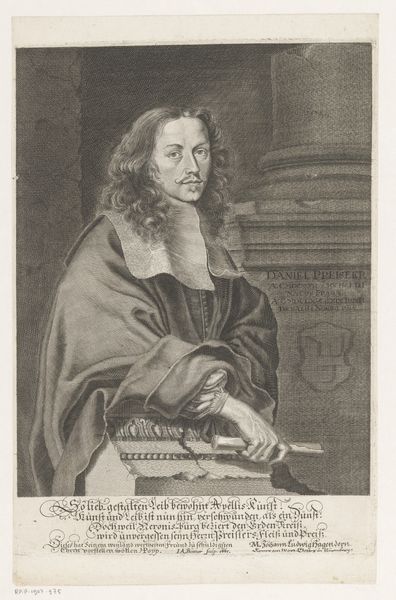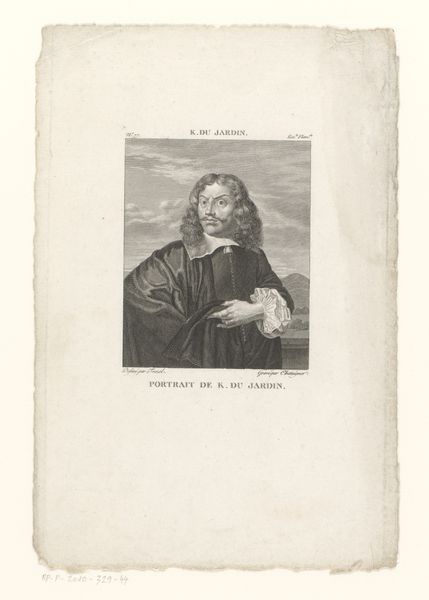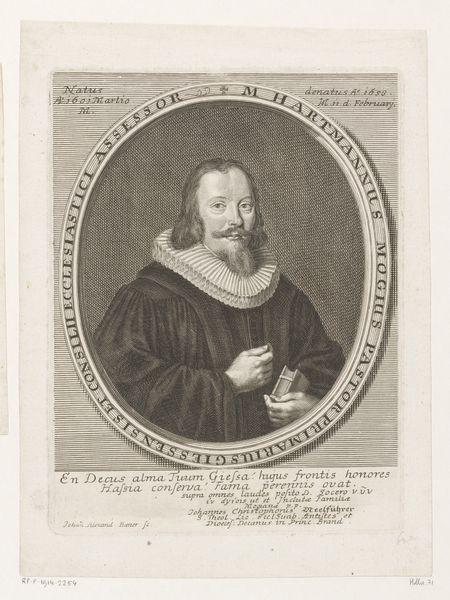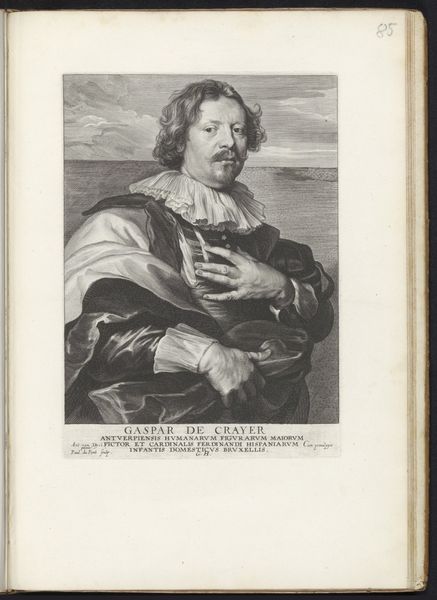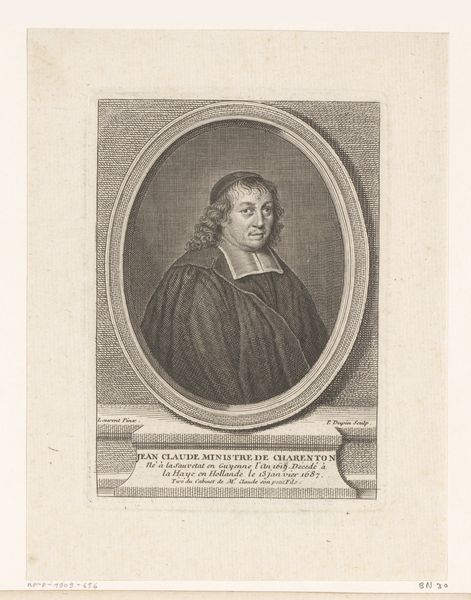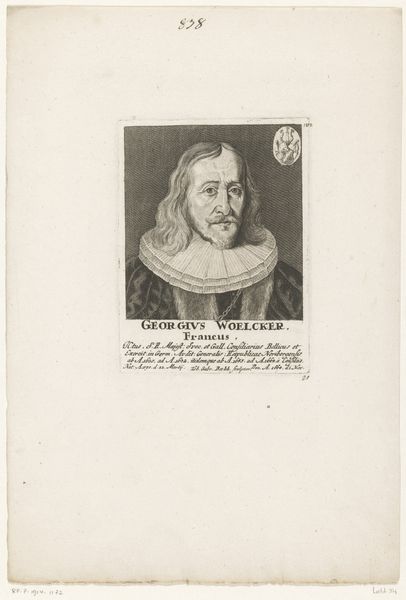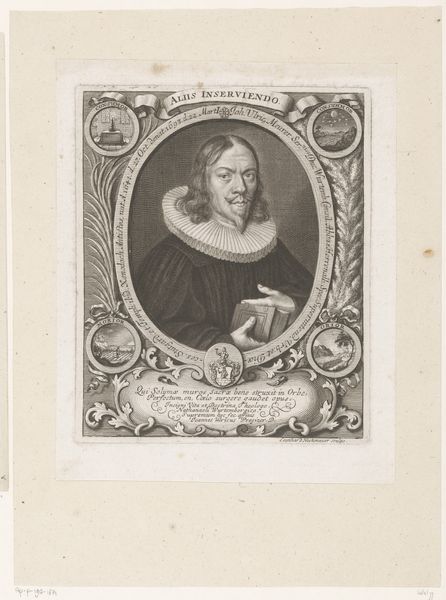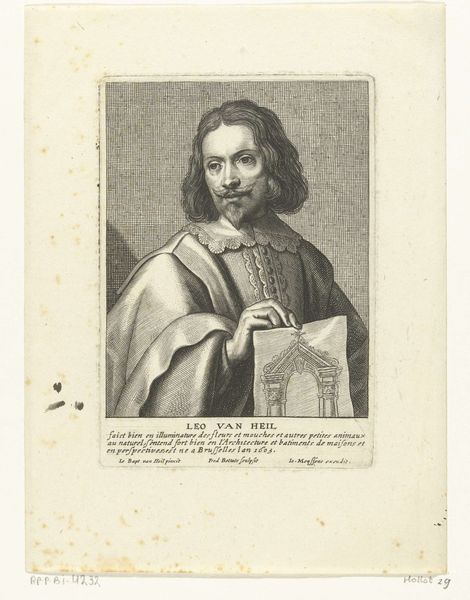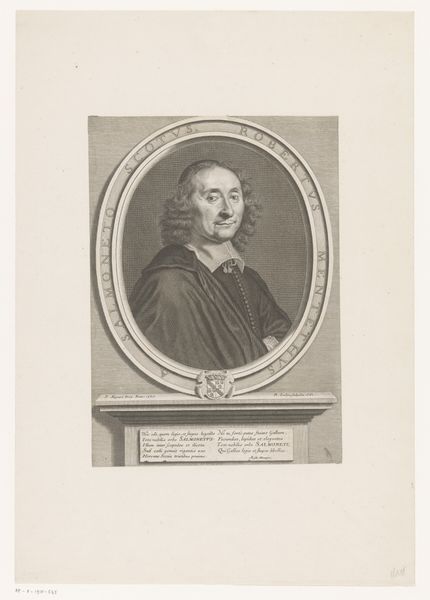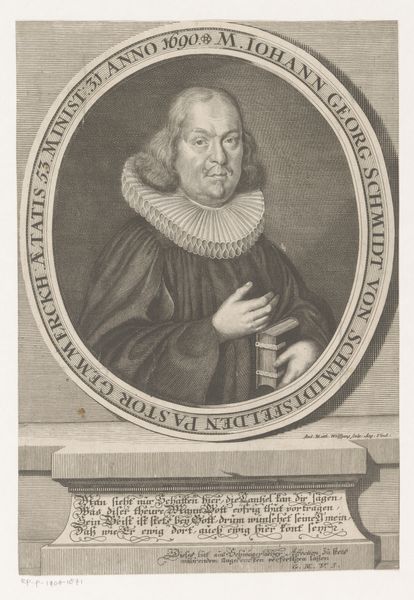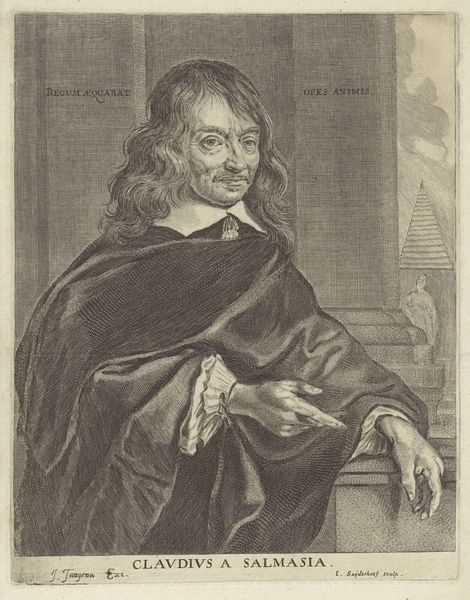
print, engraving
#
portrait
#
baroque
# print
#
old engraving style
#
pencil drawing
#
history-painting
#
engraving
Dimensions: height 246 mm, width 175 mm
Copyright: Rijks Museum: Open Domain
Curator: Paulus Pontius offers us a compelling engraving from perhaps as early as 1630 to as late as 1646, titled "Portret van Constantijn Huygens," here at the Rijksmuseum. It's a fascinating example of Baroque printmaking. What is your immediate take on it? Editor: It's austere, and, frankly, somewhat melancholic. The grayness and lack of vibrant color reinforce the sitter's almost mournful expression. There's an air of reserved dignity, but also, undeniable sadness. Curator: Indeed, the chromatic austerity is quite deliberate. Consider the tonal gradations, from the crisp white of Huygens's ruff to the deepest shadows defining his cloak. Note the formal balance: the subject gazes out and commands the scene while the architectural background lends gravitas. The book symbolizes wisdom, the cornerstone of learned gentlemen. Editor: It's interesting that you emphasize this wisdom – to me, that is also coupled with isolation and social constraint. Huygens served as secretary to multiple Princes of Orange; his life intertwined deeply with the Dutch court, but as an intellectual he walked the tightrope between power and influence. This portrait hints at the precarious nature of that position. The cloud behind is turbulent while his book could save him or condemn him depending on the words contained therein. Curator: I see your reading but, note Pontius’s technique. Observe the confident, precise lines and the strategic hatching used to sculpt form. The material properties—the paper itself and the ink applied to it—contribute to its visual impact. Editor: Right, but technique isn’t divorced from its cultural implications. As Huygens penned politically important correspondence, the engraver wielded a similarly crucial role in image dissemination. Both men shaped public discourse and both held great responsibilities to the Crown. And for every portrait like this commissioned by a wealthy patron, there were countless individuals absent from the artistic record whose lived experiences shaped Dutch history equally. The portrait acts as an intentional glorification, reminding me about power, privilege, and inequality in 17th-century Dutch society. Curator: Your points are duly noted. Looking back, the portrait provides a testament to Pontius’ mastery, a carefully constructed representation relying on line and form above all. Editor: Absolutely. By viewing this engraving critically, we have engaged with both aesthetic refinement and historical reflection to help contextualize art. Thank you for taking the time with me today to discuss it!
Comments
No comments
Be the first to comment and join the conversation on the ultimate creative platform.
